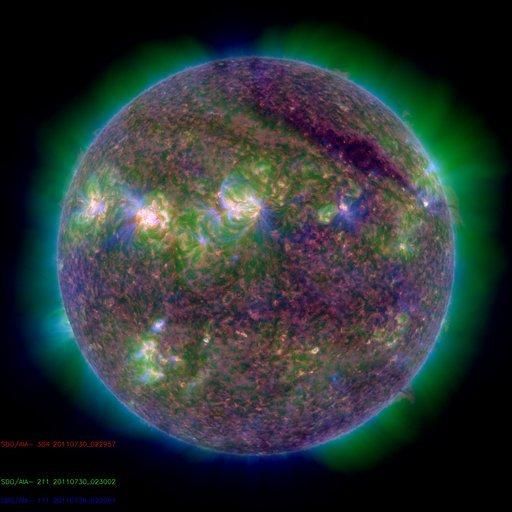
Solar Flare May Spark Northern Lights Displays

Those who look to the skies on Friday (Aug. 5) may see exceptional auroras thanks to a strong solar flare that hurled a cloud of plasma toward Earth earlier this week.
The solar flare occurred yesterday (Aug. 2) when an intense magnetic event above sunspot 1261 blasted out a flow of charged particles that's now headed toward Earth, according to SpaceWeather.com, a website that monitors space weather. This could unleash a geomagnetic storm here on our planet that might disrupt satellite and radio communications.
The plus side, though, is that skywatchers at high latitudes can expect extra-special aurora borealis displays, also known as the Northern Lights, from the interaction of these charged particles with Earth's magnetic field.
Yesterday's storm, while powerful, was nothing major, registering as a middleclass M1 solar flare. Scientist measure the strength of solar flares using a three-class system. M-Class flares are medium-strength events. The strongest type of solar eruption is class X, while class C represents the weakest, on the scale. [Anatomy of Sun Storms & Solar Flares (Infographic)]
Yesterday's solar storm unleashed a stream of protons and electrons into space in an eruption known as a coronal mass ejection (CME). It is this flow of particles that is now on a collision course with Earth.
Three NASA spacecraft the SOHO satellite and the twin STEREO vehicles were able to track the ejection as it left the sun. Their three different vantage points provided a 3-D model of the cloud that revealed it left the solar surface at a rate of about 560 miles per second (900 kilometers per second), SpaceWeather.com reported.
Editor's Note: If you snap a photo of the supercharged aurora this week and would like to share it with SPACE.com, please send to managing editor Tariq Malik at tmalik@space.com. Thanks!
Sign up for the Live Science daily newsletter now
Get the world’s most fascinating discoveries delivered straight to your inbox.
This story was provided by SPACE.com, a sister site to OurAmazingPlanet. You can follow SPACE.com senior writer Clara Moskowitz on Twitter @ClaraMoskowitz. Follow SPACE.com for the latest in space science and exploration news on Twitter @Spacedotcom and on Facebook.












